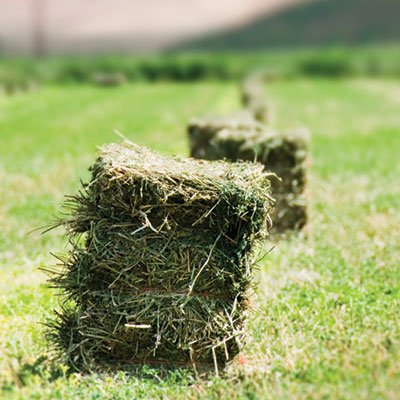Maintaining a balanced and nutritious diet is essential for keeping horses healthy and happy. Hay is one of the key components of a horse’s diet. This article explores the characteristics of high-quality hay, addresses hay allergies and sensitivities in horses, details hay storage and preservation techniques, and explains how to balance hay with feeds for optimal equine nutrition.
Identifying High-Quality Hay
Horses are herbivores, and their primary source of nutrition comes from plant material. Hay is an important source of forage, especially when grazing on fresh pasture is not possible. The quality, nutritional content, and suitability of hay for horses can vary widely.
Color:
- Bright Green Hay: Indicates that the hay was harvested at its peak nutritional value. This color suggests optimal conditions of growth and timely harvesting.
- Yellow or Brown Hay: Often signals that the hay is less nutritious and may have been harvested late or stored under suboptimal conditions, making it less appealing and possibly less healthy for horses.
Smell:
- Fresh and Sweet: A desirable aroma in hay, suggesting it is free from spoilage and mold. Fresh-smelling hay usually has a minimal moisture content, crucial for preventing mold development.
- Musty or Sour Odors: Indicative of mold or spoilage, these odors are a red flag for potential health risks to horses, such as respiratory or digestive issues.
Texture and Composition
- Softness and Leafiness: High-quality hay should feel fine and soft to the touch, with a leafy texture. This texture indicates a higher concentration of nutrients and is generally more palatable and digestible for horses.
- Seed Heads and Flowers: The presence of these elements can be a positive sign. It often means the hay was harvested while the plants were still in a beneficial growth stage, which is ideal for maximizing nutrient content.
Absence of Contaminants
- Mold: Hay should be entirely free from mold. Mold detracts from the nutritional quality and can cause serious health issues, including respiratory problems and digestive disturbances.
- Dust and Weeds: High-quality hay should also be free of excessive dust and weeds. Dust can contribute to respiratory problems, while weeds can reduce the nutritional quality and palatability of the hay.
Hay Allergies and Sensitivities in Horses
Hay is a staple in a horse’s diet but can cause allergies and sensitivities. Horses, like humans, can develop allergies to substances in their environment, including hay components. These allergies can manifest through respiratory issues like coughing, nasal discharge, and difficulty breathing.
Some horses can develop sensitivities to specific types of hay. Identifying the specific hay variety or component that triggers the sensitivity is crucial, and consulting with a veterinarian is advisable. They can perform tests to determine the exact cause of the reaction and recommend appropriate management strategies. For many horses, a reaction can be labeled as a contact allergy, where horse owners presume their horse is now “allergic” to a particular type of hay, where the reaction (i.e., hives) is in a generalized location and not a full-body reaction. Overall, there needs to be consideration that food allergies in horses do exist; however, most researchers and veterinarians consider them rare.
Hay Storage and Preservation Techniques
Proper storage and preservation techniques are crucial to maintaining hay’s quality and nutritional value. Hay should be stored in a clean, dry, and well-ventilated area to prevent moisture accumulation, elevated on pallets or storage racks to minimize contact with moisture, and regularly inspected for mold or spoilage. Using hay covers or tarps can protect the bales from rain and excessive sunlight, further preserving their quality.
Balancing Hay with Other Feed
While hay forms the backbone of a horse’s diet, it is important to balance it with other feed sources to ensure a comprehensive nutritional profile. Hay primarily fulfills a horse’s fiber needs but may lack certain essential nutrients such as vitamins and minerals. Supplementing hay with concentrated feeds, like grain or pelleted feeds, can provide additional nutrients. However, any dietary changes should be introduced gradually to avoid digestive issues, and feeding guidelines should be adjusted based on the horse’s individual needs and condition.
By carefully selecting high-quality hay and balancing it with appropriate feeds, you can ensure that your horse receives optimal nutrition for good health and well-being.


